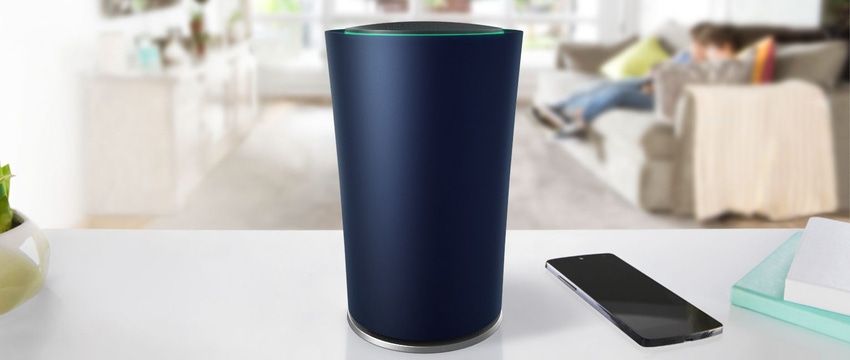The initial wave of excitement generated by Google’s OnHub device seems to be settling down. When it comes to consumer electronics, you have to hand it to Google and Apple – they really know how to generate buzz, don’t they?
September 1, 2015

Telecoms.com periodically invites expert third parties to share their views on the industry’s most pressing issues. In this post, Todd Mersch from wifi QoE specialist XCellAir discusses the merits and challenges of Google’s OnHub router.
The initial wave of excitement generated by Google’s OnHub device seems to be settling down. When it comes to consumer electronics, you have to hand it to Google and Apple – they really know how to generate buzz, don’t they?
What they’re also great at, is over-selling particular features of their devices to detract attention from what they’re really for. Most articles focus on the iconic and unusual design. And as you’d expect, Google has supplied a range of pictures positioning the OnHub in various prominent positions around its makeshift home. A key selling point is the fact that it looks good enough to not be hidden behind photographs, stuffed behind the TV or kept under the stairs.
When it comes to the design – you can’t argue that it’s different. Beauty is in the eye of the beholder, I guess and people can make up their own minds where they choose to put theirs. It certainly looks better than most other routers – although it does look like one of those large plastic cups you can get from a cinema, doesn’t it?
Regardless of whether you like the look of OnHub or not, I still expect it to sell – and sell very well. This is purely because OnHub has been introduced because Google, like all other ISPs and telecoms operators, has realized that Wi-Fi doesn’t work very well unless it is managed properly from a QoE perspective.
OnHub tackles this issue in two clear ways. Firstly it is controlled by an app which tells users which devices/services are consuming the most bandwidth at any time from within the home. This is a key feature that should oust all capacity hoggers – especially useful in a family environment should parents want to know which child is consuming what service at what time of day.
The second advantage is set to have an even bigger impact however. Google says that the OnHub will deliver a better Wi-Fi performance because it can switch constantly between wireless channels until it finds the least crowded to accommodate new devices. This is the real game-changer as it acknowledges what most of us already know – that a vast majority of available Wi-Fi capacity is being wasted through technical issues including interference. The challenge is how to do this effectively as an isolated stand-alone node. Without getting too techy you can run into some challenges with this approach when you do not have an overarching view of other WiFi. The interference issue is not purely related to private Wi-Fi in the home either – it also impacts public and carrier Wi-Fi and reflects an inherent issue with unlicensed spectrum.
With the launch of On Hub therefore, Google is essentially charging its customers $200 to help them better manage Wi-Fi usage themselves so they can ultimately use less in return for a better user experience.
But why do this now? The answer lies in the anticipated surge in new devices thanks to the IoT vision. The telecommunications industry recognises that if these new devices and services are to make their mark, consumers need to be empowered to properly manage their own bandwidth consumption (because it’s unlikely that there’ll ever be enough for everything at once). Google knows that if it can put an OnHub in most households, it can manage the IoT surge in the same way its Android platform helped managed the smartphone experience. Much like the Android experience, it’s only a matter of time before Google learns how to monetise having an OnHub in every home.
But let’s not assume that the OnHub can revolutionise the Wi-Fi experience on its own. As previously mentioned, the private Wi-Fi experience in the home is one thing, carrier and public Wi-Fi are quite another. Additionally, the large majority of home Wi-Fi is being provided by the internet service provider, as much as 66% of homes in 2014 according to IHS. This is why Wi-Fi QoE management is as pressing an issue for telecoms operators, especially those that double as domestic ISPs. For them Wi-Fi is now playing a critical role in determining quality of experience in the home and for mobile users on the move too. It therefore stands to reason that mobile operators need to offer the same OnHub-style QoE management to carrier-grade access points and provide the opportunity to dynamically select different channels according to traffic load. The difference is that telecoms operators can’t charge their customers $200 per access point to fix it like Google can.
There are a group of specialized companies emerging however that have the intelligent scalable technology to deliver this QoE management improvement without the expensive router or the consumer being involved. The evolution of cloud technology has enabled the optimization of dense Wi-Fi and cellular networks from a centralized, consolidated view. Mobile operators can use this new level of data capacity management and wireless analytics to realize the full monetary value of their networks.

At XCellAir, Todd is responsible for worldwide sales, product management and marketing. Prior to founding XCellAir, he spent nine years leading the Trillium software business at both Continuous Computing and Radisys. Todd focused Trillium on providing software and services for both 3G and LTE small cells, including enabling the world’s first LTE small cell deployments. He has been a thought leader and evangelist of small cells for more than seven years. He holds both a BS in Systems Engineering from the University of Virginia and a MS in Systems Architecture from the University of Southern California.
Read more about:
DiscussionAbout the Author(s)
You May Also Like








.png?width=300&auto=webp&quality=80&disable=upscale)


_1.jpg?width=300&auto=webp&quality=80&disable=upscale)


.png?width=800&auto=webp&quality=80&disable=upscale)